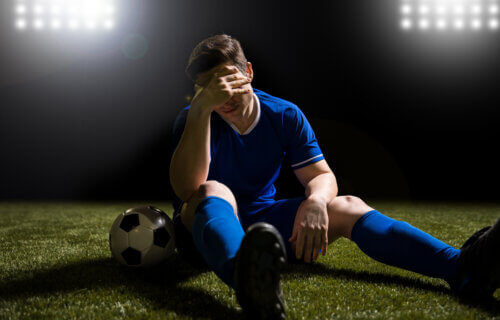SEATTLE — College sports have become a huge part of American society and entertainment, but behind all the fanfare, it’s easy to forget these talented athletes can deal with the same challenges to their mental health as ordinary fans. Alarming new data from the NCAA reveals a significant increase in the number of suicides among college athletes in recent years. More specifically, the analysis found that suicides have doubled over the past 20 years.
Study authors say suicide now ranks as the second most common cause of death after accidents among this group of young adults. Notably, suicide rates are highest among cross-country competitors.
Overall, U.S. suicide rates increased by roughly 36 percent across all age groups between 2001 and 2021. Despite that trend, researchers stress the evidence around athletes’ vulnerability to suicide, particularly younger athletes, is contradictory.
So, in an effort to better inform policy and suicide prevention efforts, they put together an analysis of suicide rates spanning from July 2002 through June 2022 strictly among NCAA athletes. Their aim was to determine if there were any discernible differences or trends in incidence by age, sex, race, division, sport, time of year, and day of the week.
Anyone competing in at least one varsity sport at NCAA Division I, II, or III institutions was included in the study. Researchers gathered information on each person’s cause of death, age, race, and sporting discipline using various online media reports, obituaries, reviews of post-mortem examinations, and other official documents. Meanwhile, the deaths themselves were broadly categorized as one of the following: accidents, murders, suicides, unintentional drug/alcohol overdoses, or medical causes.
Over the span of those two decades, 1,102 athletes passed away; 128 (11.5%+) took their own lives, including 98 men and 30 women. Their average age was 20 years-old, but ages ranged between 17 to 24. Over half (59%; 91) were Caucasian.
While the yearly incidence rate of suicide for men increased during the study period, that same metric only increased among women from 2010-2011 onwards. This is a sharp contrast in comparison to the incidence rate of other deaths falling between 2002 and 2022.
Male suicides jumped up from 31 during the first decade of the study to 67 over the next 10 years. Similarly, female suicides increased from nine to 21. In total, the proportion of suicide deaths doubled from the first decade (just over 7.5%) to the second (just over 15%). By the time of the second decade, suicide was the second most common cause of death after accidents for NCAA athletes.

The most suicides occurred among male cross-country athletes, as well as among more Division I and II athletes in comparison to Division III athletes. However, researchers saw no significant differences in rates when analyzing according to sex, race, or sporting discipline. The study authors found nine deaths occurred every two years among male athletes, and three deaths took place every two years among female athletes. For cross-country athletes, there were an average of two deaths every five years.
The most suicide deaths took place at age 20 (33; 26%). That age is typically when a college student-athlete is in the middle of their collegiate career. Also, there appear to be temporal and seasonal factors at play as well. Most suicides occurred on Mondays (25; 20%) or Tuesdays (26; 20%).
While the average number of suicides during the warmer months of June through August was 6.7 per month, during the rest of the year, the average number was 12 per month over the course of the entire 20-year period.
The study authors also acknowledge numerous limitations to their findings. To start, the study relied on third-party reports due to a lack of any mandatory reporting system for athlete deaths. Thus, the estimated incidence may be inaccurate. There was also no information on potentially triggering underlying mental health issues, like depression and anxiety, among athletes who died by suicide.
Suicide Prevention Resources:
- Call or text the Suicide and Crisis Lifeline at 988
- Chat at 988lifeline.org
- 988 is confidential, free, and available 24/7, 365 days a year.
“Athletes are generally thought of as one of the healthiest populations in our society, yet the pressures of school, internal and external performance expectations, time demands, injury, athletic identity and physical fatigue can lead to depression, mental health problems and suicide,” the study authors write in a media release.
“Athletes may also experience harassment and abuse within their sport, including psychological abuse, physical abuse, sexual abuse, hazing and cyberbullying from the public and members of their team including peer athletes, coaches and members of the entourage.”
The NCAA recently renewed its efforts to address mental health issues among college athletes. Even so, “despite recent increased focus on mental health in athletes, death by suicide is increasing,” the researchers highlight.
As far as measures that can help prevent athlete suicides among college students, researchers name additional mental health resources to help raise awareness, screening for early risk identification, training coaches and support staff on how to identify athletes at risk, and providing access to mental health providers trained in sport psychology as just a few examples.
The study is published in the British Journal of Sports Medicine.
